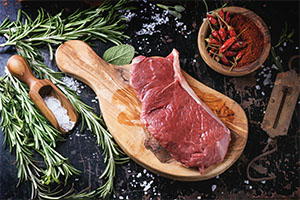 Is your fitness plan goal to loose weight? Maybe gain muscle. Have extra energy, Or, maybe just to eat healthier. Regardless of what your goals are, one thing is common between these goals is your diet – especially protein. Protein is an essential macronutrient that is involved in a wide range of bodily functions, including the building and repair of tissues, the production of hormones and enzymes, and the transportation of nutrients and oxygen throughout the body.
Is your fitness plan goal to loose weight? Maybe gain muscle. Have extra energy, Or, maybe just to eat healthier. Regardless of what your goals are, one thing is common between these goals is your diet – especially protein. Protein is an essential macronutrient that is involved in a wide range of bodily functions, including the building and repair of tissues, the production of hormones and enzymes, and the transportation of nutrients and oxygen throughout the body.
If you’re an athlete, if you’re pregnant, or you’re older, you need to consume adequate protein. Protein is vital in your diet, as it helps repair and rebuild muscle tissue after an intense workout, while also helping to produce enzymes and hormones that your muscles need to function.
And, there are simple strategies to get extra protein into your diet. They include having a source of protein with every meal or snack, using protein powders or bars for snacks, choosing high-protein options when eating out, and making protein smoothies by blending protein powder with nut butter, fruits, and vegetables.
The National Academy of Medicine recommends that the adult men and women get 0.8 grams of protein per pound of body weight each day. That’s for the average person. If you’re working out, you have a physically demanding job, or you’re an athlete, you may want to increase that to more like 1 gram per pound of body weight so that you’ve got that extra protein to rebuild muscles after intense physical activity or exercise.
If you’re a vegetarian, it can be a bit more challenging to get enough protein, compared to meat eaters. Look for plant-based sources of protein, such as beans, lentils, tofu, nuts, and seeds. For example, a half cup of beans contains 7–8 grams of protein, while a quarter cup of nuts or seeds contains 6–7 grams of protein. Tofu is also a good source of protein, with about 10 grams per 3.5 ounces. You can also get protein from grains, such as quinoa and rice, as well as from vegetables like broccoli, spinach, and asparagus. You may want to have more protein shakes as well to make sure you get enough protein.
There are many foods that are high in protein and can easily be incorporated into the diet. Some examples include:
- Chicken breast (31 grams of protein per 3.5 ounces)
- Salmon (23 grams of protein per 3.5 ounces)
- Greek yogurt (17 grams of protein per 6 ounces)
- Eggs (6 grams of protein per large egg)
- Beans (7–8 grams of protein per half cup)
- Nuts and seeds (6–7 grams of protein per ounce)
Incorporating these high protein foods into your diet and fitness plan can help you meet your protein needs and support overall health and wellness goals. And, to be safe, you may want to consult your dietician or doctor as well, as these are just suggestions.

